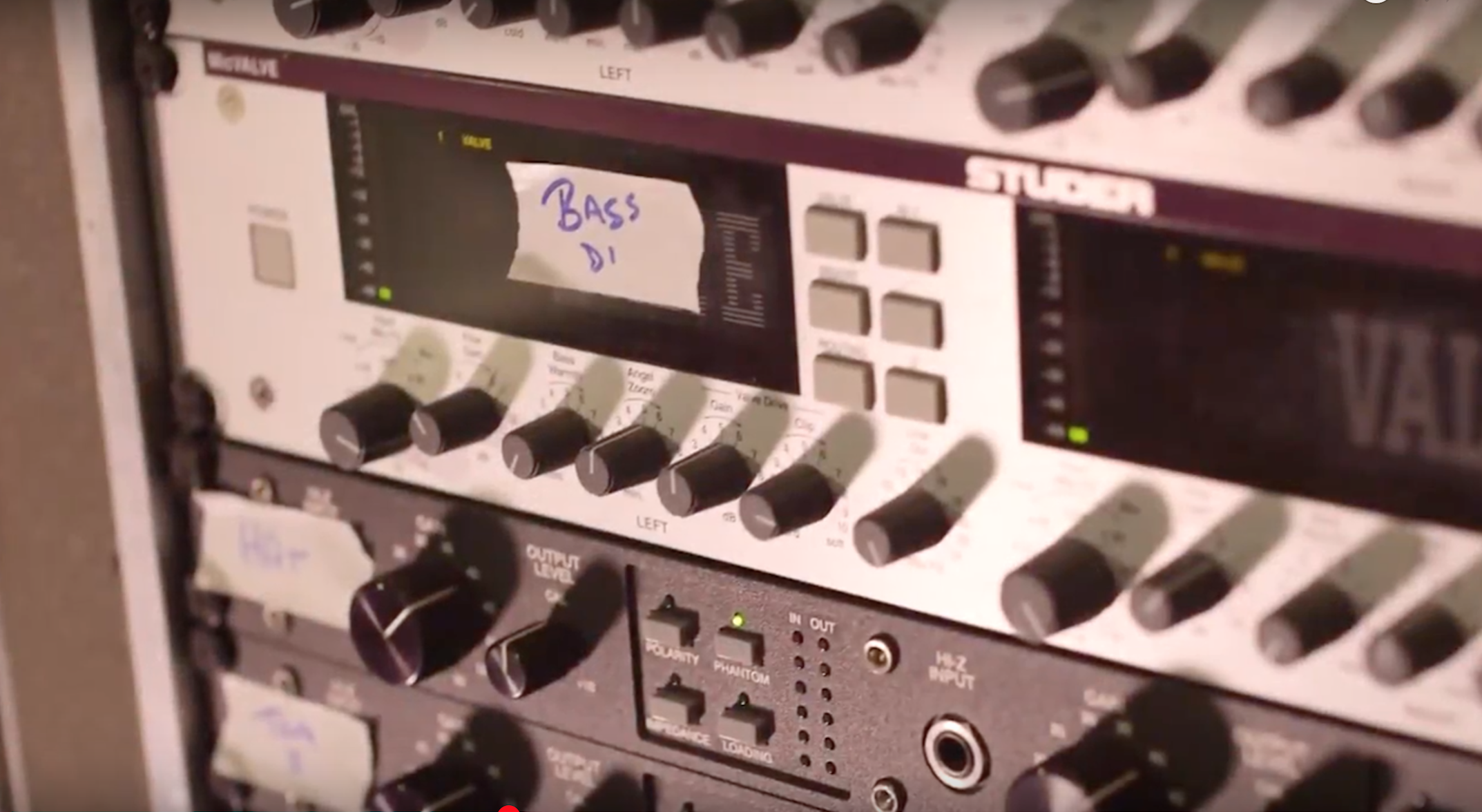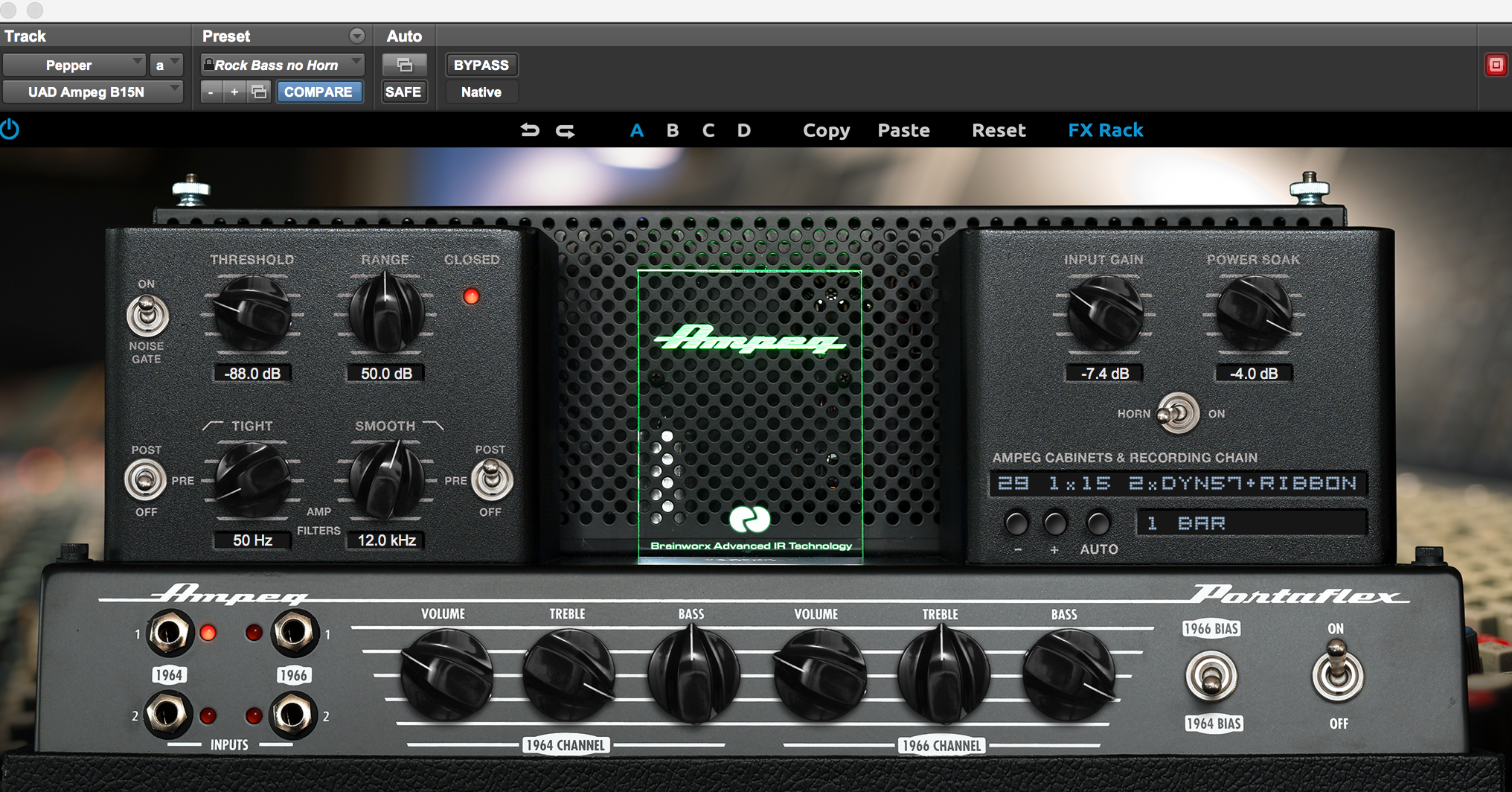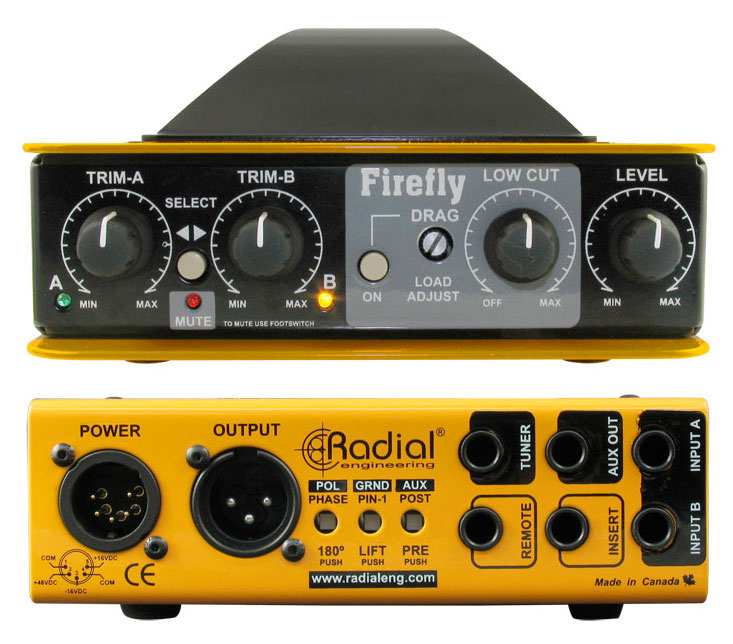THE DIRECT ROUTE TO GREAT-SOUNDING BASS
The latest Puremix video features the legendary Al Schmitt producing a recording of jazz singer Cyrille Aimée accompanied by a band of LA studio musicians. The session takes place at Studio A at Capitol Studios in Los Angeles. This excerpt focuses on how Schmitt configures a DI setup for the electric bass.

The Studer MicValve preamp is part of the signal chain Schmitt users for the DI electric bass.
SUPER FLY
Schmitt says that he prefers to DI a bass whenever possible, rather than miking a bass amp, because doing so allows for a cleaner sound with maximum fidelity. Schmitt instructs his longtime assistant engineer Steve Genewick to patch the bass, a ’71 Fender Precision played by Dave Robaire , through a Radial Firefly, which is an active direct box with a tube stage. From there, he sends it into a Studer D19 MicValve preamp with tube circuit. The last stop before Pro Tools is a QQQ LA-2A hardware compressor, which he uses to compress the bass by about 1dB.
Interestingly, in part 1 of the full video, Genewick mentions that Schmitt will probably not use any EQ during the session, and almost definitely not on input. So he won’t be EQing the bass as it goes in. Instead, he’s just trying to faithfully capture the music. And who can blame him, he’s working with the best of all worlds in this session, an excellent player, a great bass and top-notch outboard gear.
DI YOURSELF
In your home studio, when you’re not likely to have circumstances that are quite so optimal, you can still capture excellent DI bass tones. The easy way is to simply plug the bass into an instrument input on your audio interface. But if you have a nice mic preamp, you’ll probably get a better sound going through a direct box into the preamp and then into your interface. If you have mic-pre options, it might be worth experimenting a little to see what sounds best.
If you do use a DI box, there can be a significant sonic difference between the sound of a passive and active unit. A passive DI has a transformer that can color the sound a bit—which may or may not be a good thing depending on the quality of the transformer. Passive direct boxes require no power and don’t add any noise.
An active DI will give you a hotter signal and tend to be more transparent. Because it's powered, an active DI can be designed with additional circuitry, such as the tube stage in the Radial Firefly that Schmitt uses. You do run the risk of adding more noise with an active DI, but with the right gain staging—especially hitting your DAW’s input with enough level—that shouldn’t be problematic.
PLAY AND PLUG
Since most of us don’t have the type of hardware that’s available at Capitol Studios, we may have to do a little more with the bass sounds after they're captured. Naturally, the sound of the instrument itself will have a significant impact on the quality. The optimal combination is a great player playing a top-quality instrument through high-end hardware. That said, the most critical part of that equation is the player. A seasoned bass player will produce a much more consistent sound than an inexperienced one. The dynamics will be more contained and there won’t be as many noises and finger squeaks.

A bass-amp modeling plug-in such as this UAD Ampeg B-15N can significantly improve the sound of a DI track.
If your DI bass sound you get is not particularly inspiring, there are many excellent amp-modeling and compressor plug-ins that can make it sound fuller and richer, and give you some of the tonal qualities that Schmitt is getting from the Firefly, Studer, and LA-2A in the video.

Schmitt chose a Radial Firefly direct box for the bass.
Example 1a: Fender Precision bass, Little Labs Pepper DI
In Example 1A you’ll hear a Fender Precision bass recorded DI, straight in using an active DI box (Little Labs Pepper).
Example 1b: Fender Precision bass, UAD B-15N plug-in
Example 1b is the same recording, but this time with the UAD B-15N amp modeling plug-in inserted, along with a UAD LA-2A compressor plug-in. The sound is both fuller and warmer.
A good compressor is vital on bass, because you want to keep the dynamics under control. Many compressors (and compressor plug-ins) also add pleasing tonal coloration.
Example 2a: P-basss, CBI Performer DI
Example 2a uses the same P-Bass, but this time recorded with a CBI Performer Series passive DI box. Because it’s passive, it provides a lower output, so the input had to be turned higher than with the passive DI. The tone of this direct box is quite different from the previous example, tracked through the Little Labs Pepper.
Example 2b: P-Bass, Amplitube plug-in
In Example 2b, you’ll hear the same recording, but this time with IK Multimedia’s Amplitube modeling plug-in providing amp and cabinet modeling, and a Fab Filter C2 compressor inserted, as well.
DISTORTED IMPRESSIONS
For situations where you want a distorted bass tone, but don’t want to mic a bass amp (or you don’t have one handy) you can use plug-ins to get convincing sounding distortion after the fact, on a DI-recorded track.
Example 3a: P-Bass, average interface and picked strings
Example 3a features the same P-Bass from the previous examples, but this time it's a picked part rather than one played with fingers. It was recorded through the instrument input of an inexpensive audio interface, and the sound quality is mediocre at best.
Example 3b: P-Bass and colors
For Example 3b, Positive Grid’s BIAS AMP 2 amp-modeling plug-in was used to improve the sound quality of that same recording, significantly. The plug-in's Gain parameter was cranked to provide some grit. The signal chain also included a Waves Renaissance compressor.
DI AOK
When it comes to DI bass, you have a lot of choices as to how to color the sound, ranging from the DI itself to the mic preamps to any plug-ins you insert after the fact. You have a lot of creative options. What’s more, if you have a reamping box of some sort, you can always reamp the bass part through an amp, after the fact.